features
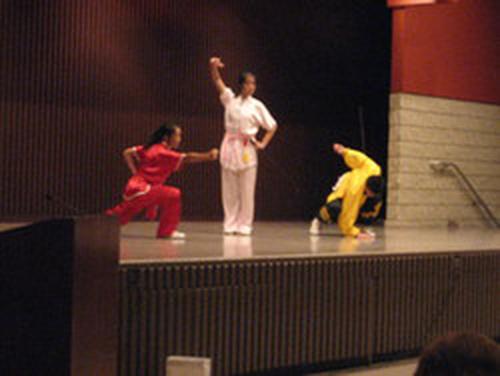
A conference to remember
By Emily Hsiao | Oct. 29, 2007, midnight | In Features »
The lights dim and a fast, catchy beat slowly seeps out from the speakers, making the audience tap their feet. Eight girls dressed in intricate red and blue costumes stand posed on the stage with their backs turned to the audience. Slowly, two by two, they turn around with their waving arms in the air and start dancing to the rhythm of an energetic bhangra tune.
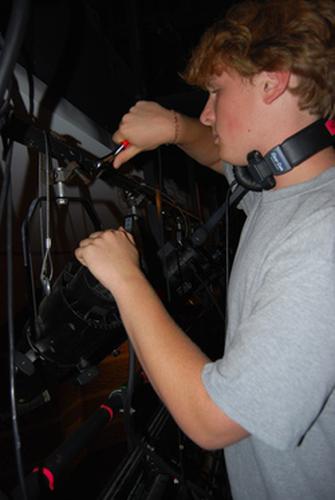
The other Montgomery Blair players
By Kiera Zitelman | Oct. 1, 2007, midnight | In Features »
On a backstage door surrounded by electrical cords, screwdrivers and small power tools, a sign reads, "The stage crew does whatever it takes to ensure the success of the production." For stage crew director John Kaluta and his Blair students, this slogan is a way of life.
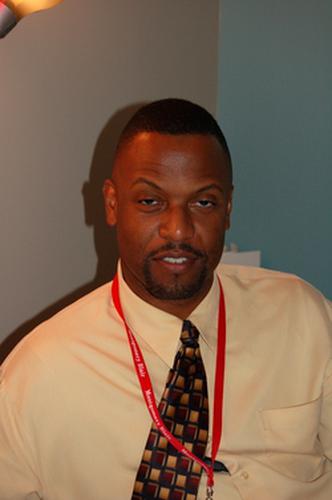
Putting the pal in principal
By Brittany Allen, Josie Callahan | Sept. 25, 2007, midnight | In Features »
It was mid-August and Blair seemed empty, except for one solitary man striding down Blair Boulevard. Gazing up at the threshold of the main staircase leading toward the high turquoise ceiling, Darryl Williams stopped in his tracks. Everything was oversized, built to hold the diverse mix of students constituting the largest high school in the county, but without them crowding the halls, its vastness engulfed him. Williams was standing in the midst of the high school which was to become his new home.

From behind the scenes to in front of the lights
By Lucas Alvarado-Farrar | Sept. 24, 2007, midnight | In Features »
The night before Blair's 2001 spring musical, "Guys and Dolls," technical education teacher and stage crew sponsor John Kaluta decided to leave the Blair Players forever. Sitting down to write an instructional letter to the incoming stage crew sponsor, James Distler, Kaluta attempted to ensure that he wasn't abandoning his crew to dedicate more time to sailing. After typing the last period and printing the letter, Kaluta looked down at the 14 pages sprawled across his desk and decided then that he had to write a book.
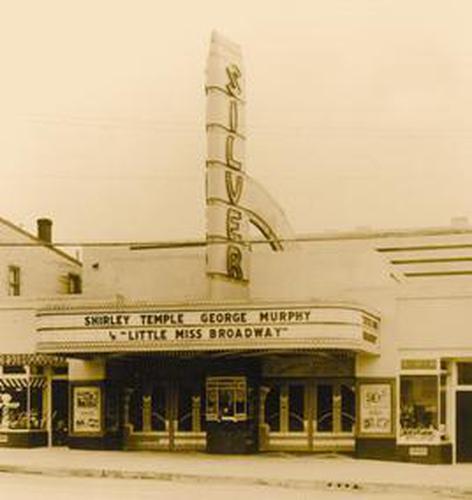
From past to present
By Kevin Teng | Sept. 23, 2007, midnight | In Features »
Ten years ago, downtown Silver Spring was a different city, home to many abandoned, run-down buildings. The once-charming Silver Theatre had lost its beautiful look, and there was neither turf nor Majestic Theater. The declining trend, which began in the sixties with the opening of Wheaton Plaza, seemed to have no end.
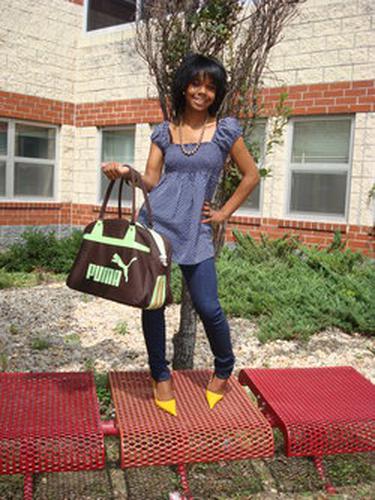
Silver Chic
By Brittany Allen, Josie Callahan | Sept. 11, 2007, midnight | In Features »
Within the realm of the new school dress code, Blazers may find it harder and harder to stay in vogue. A few fashion pioneers, however, have managed to break through the barriers and create fall styles of their own. Silver Chips Online has spotted and reported the hottest trends of the season from Rodeo Drive to Blair Boulevard to help the everyday Blazer dress to impress beyond the first week of school.
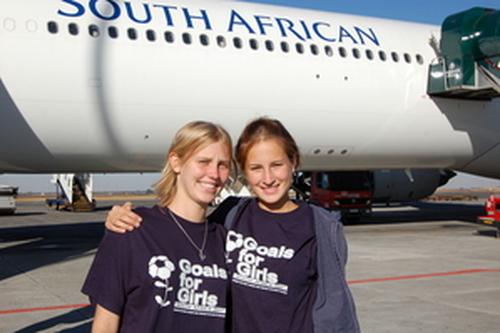
Goals for Girls scores
By Johanna Gretschel | July 21, 2007, midnight | In Features »
Last year, U-16 Washington Area Girls Soccer (WAGS) coach Ian Oliver presented his team, the D.C. Blast, with the opportunity to select a foreign locale to visit. Much to his surprise, the group of 14 to 16-year-old girls bypassed Big Ben and the Eiffel Tower for two weeks in South Africa, educating poverty-ridden girls their age about HIV and AIDS.
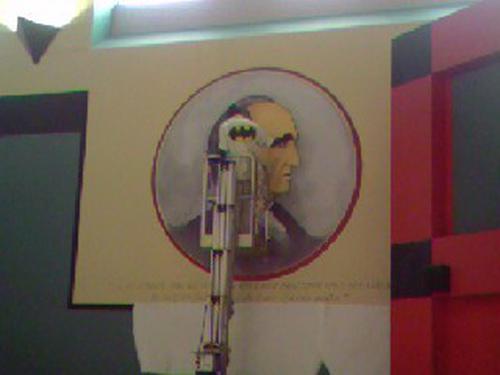
Painting the new face of the Blazer
By Jon Kesten | June 27, 2007, midnight | In Features »
Suspended thirty feet in the air, muralist Stacy Ridgeway carefully paints the black outline of Montgomery Blair's nose while sporting a gray jumpsuit with a "Batman" symbol on the back. Near the main staircase down below rests a paint-splattered stereo playing jazz tunes. After putting on final touches, Ridgeway descends on a hydraulic machine lift and selects another, smaller paintbrush, and the front of his paint-covered jumpsuit is revealed to show a picture of Dora the Explorer. Ridgeway glances above him to admire the nearly finished portrait of Montgomery Blair. However, his work here is not yet done.
Thurman, Candace
By Poorva Singal | June 24, 2007, midnight | In Teacher Feature »
By seventh grade, she and her mom had decided. She was not going to be anybody's secretary. She was not going to be a waitress. And she was definitely not going to be a teacher. Yet Candace Thurman is currently finishing up her third year teaching at Blair after having taught for 23 years at Walter Johnson.
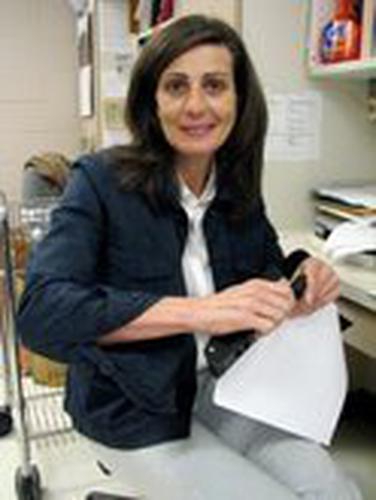
Cuadrado-Corrales, Maria
By Julia Mazerov | June 24, 2007, midnight | In Teacher Feature »
"It's like I'm an actress in front of an audience, so I need to know what the audience wants," says a smiling Maria Cuadrado-Corrales as she describes her teaching style. Cuadrado, a Spanish teacher in Blair's Foreign Language Department, has been teaching at Blair for three years but has taught in other schools for the past 15.
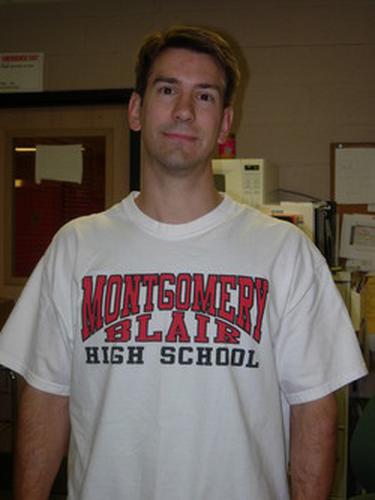
McMahon, Rob
By Jenny Williams | June 23, 2007, midnight | In Teacher Feature »
The usual noise surrounds the weight room. The football players are noisy, music is blaring and others are screaming while trying to finish their final repetitions. However, most of the noise is coming from Rob McMahon. "Don't bend your back," he says to a freshman. "Push harder," he says to one of the football players.
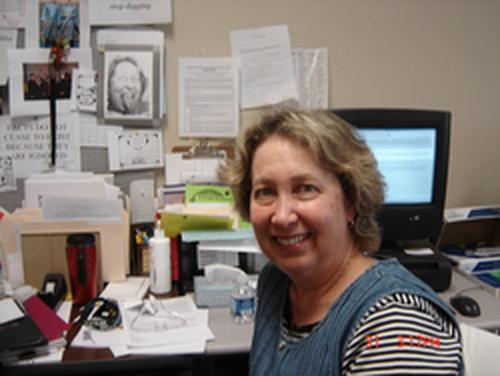
Weldon, Stefanie
By Alisa Lu | June 23, 2007, midnight | In Teacher Feature »
When Stefanie Weldon first entered the Edmund A. Walsh School of Foreign Service at Georgetown University in 1968, she was shocked. The atmosphere there screamed wealth and privilege, something Weldon was not used to. Yet she soon found a kindred spirit in a gentleman from Arkansas who came from a similar background. Twenty-five years later, her friend William Clinton was sworn in as the 42nd President of the United States.
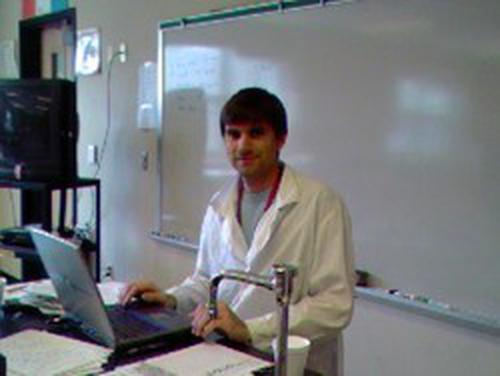
Prange, Eric
By Jon Kesten | June 23, 2007, midnight | In Teacher Feature »
A Frisbee spins tightly on his index finger while he sits at his desk. Sporting a white lab coat and yellow goggles, Eric Prange then pours 50 ml of hydrochloric acid into a graduated cylinder.
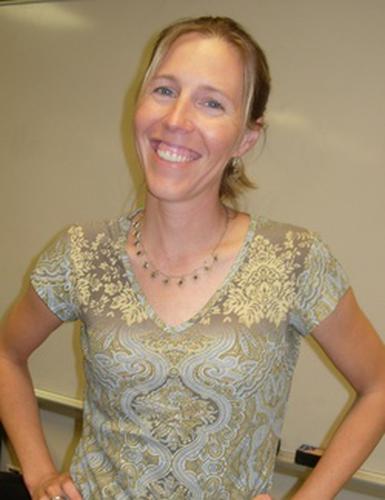
Tanner, Jenny
By Susie Branson | June 23, 2007, midnight | In Teacher Feature »
Staring down at her manicured hands, Biology and ESOL environmental science teacher Jenny Tanner reflects on a time when those same hands felt as if they were on fire after she ripped seeds out of poisonous peppers for a day.
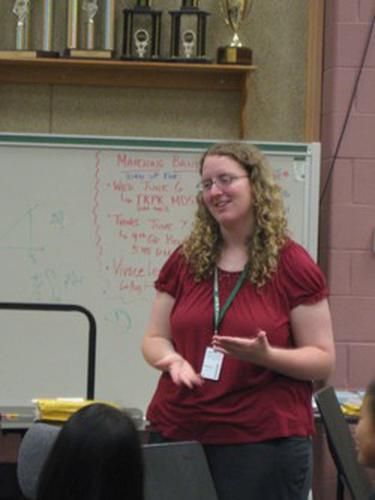
Roberts, Michelle
By Emily Hsiao | June 23, 2007, midnight | In Teacher Feature »
Michelle Roberts decided in high school that she wanted to teach music. Sitting at her desk, Roberts gives an amused yet somewhat cynical laugh as she recalls her band director's warning. Shaking her finger, Roberts does an animated imitation of her teacher. "You know it's a lot of work, but I'm telling you, it's a lot, a lot, a lot of work," Roberts says in a stern voice, before breaking down into laughter.

Moose, Kevin
By Kiera Zitelman | June 23, 2007, midnight | In Teacher Feature »
Kevin Moose is rarely seen standing still. His enthusiasm for life and learning is reflected in his rapid-fire speech as he walks the halls with colleagues or engages his students in the classroom.
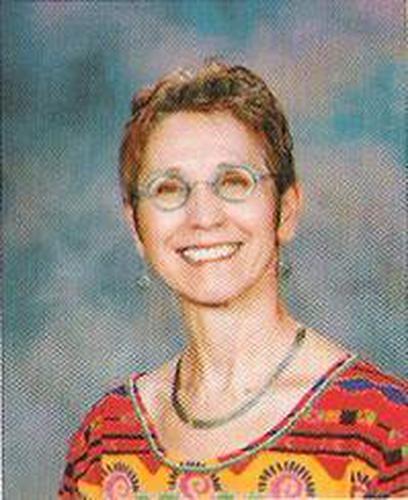
Berry, Janet
By Greg Kohn | June 23, 2007, midnight | In Teacher Feature »
It took a little bit of time for things in Janet Berry's life to fall into place. She describes her hometown, South Bend, Indiana, as a place where "many people are from but not many stay." Early in her life, Berry saw art as her ticket out. But despite being the "artist in the class," she was hampered by a high school that offered only one art class.
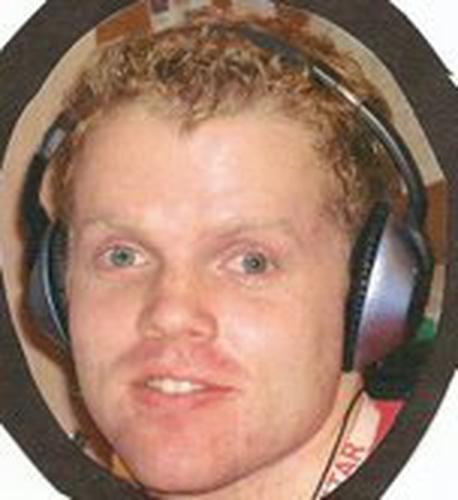
Giles, John
By Lucas Alvarado-Farrar | June 23, 2007, midnight | In Teacher Feature »
While students follow John Giles as he scribbles a complicated pre-calculus problem on the whiteboard, a sinister plot is being hatched across the room. He turns to explain what he has written when a "click" and "pop" resonate through the air and a small foam pellet hits him square in the chest. Giles has just been shot.
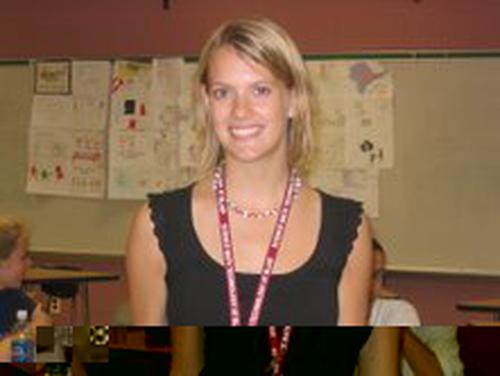
Lee, Stephanie
By | June 23, 2007, midnight | In Teacher Feature »
Stephanie Lee walks into a classroom wearing a new shirt. She lectures her students at the board and halfway through the class period, her students stop her to tell her that the tags on her shirt are still on. Later, her entire class has to tell her that her fly is unzipped. But for this young teacher, such situations don't spell trouble because, as she says, "[embarassing] moments like those create a good working relationship in the room."
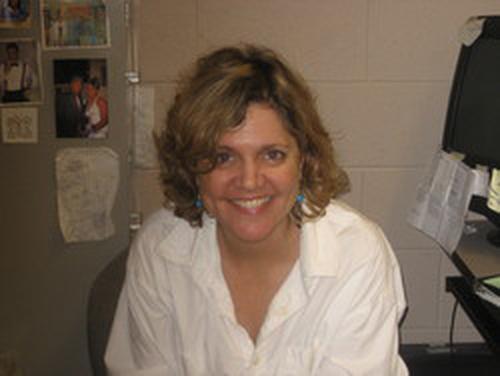
Simel, Dana
By Sophie Schwadron | June 23, 2007, midnight | In Teacher Feature »
It is the first day of ninth grade, and a group of anxious freshmen girls nervously filter through the door to room 162. But as soon as their English teacher begins to speak in a warm Southern accent, the girls immediately feel at ease. "Y'all are my babies," Dr. Dana Simel tells them, "And I'll do anything to protect you."
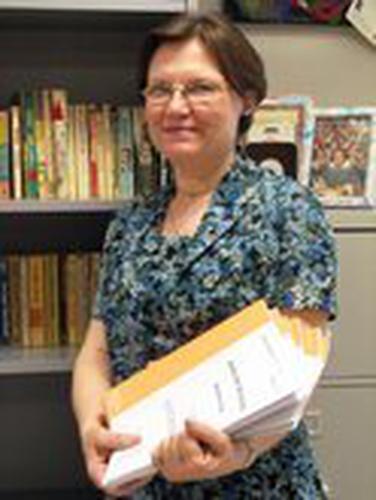
O captain, my captain
By Brittany Allen | June 20, 2007, midnight | In Features »
Carole Tomayko started working at Blair in 1981, beginning as a staff assistant and eventually taking a position as an English teacher. Over her years at Blair, she has seen the school move from one building to another, seen hundreds upon hundreds of students walk the hallways and taught just about every core book known to mankind. But this year, she says, it's finally time to kiss the kids goodbye and leave Blair Boulevard once and for all.

SGA wraps up eventful year
By Clement Yang, Betsir Zemen | June 14, 2007, midnight | In Features »
With the ID policy controversy, hallway sweeps, and a host of new events, it has been a very busy and tumultuous yet successful year for Blair's SGA under the leadership of 2006-2007 SGA President Eric Hysen. In spite of such success, the SGA has realized major flaws in its organization and methods of operation, leading to structural changes that will be incorporated into next year's SGA. The SGA will also face the challenge of meeting and working with a new principal next year.

Crossing the language barrier illegally
By Gus Woods | June 14, 2007, midnight | In Features »
Junior William Cavanaugh remembers Spanish class as a sophomore. He did the work, memorized vocabulary, learned the grammar and read about the culture. But after earning high grades in nearly four years worth of Spanish courses, Cavanaugh found himself unable to readily speak the language.
Galloway, Kerri
By David Jia | June 12, 2007, midnight | In Teacher Feature »
She didn't start learning Spanish until eighth grade and she doesn't have a degree in education. Nevertheless, Kerri Galloway finds herself in Room 156 pointing out the objectives on the overhead to 19 Spanish I students.
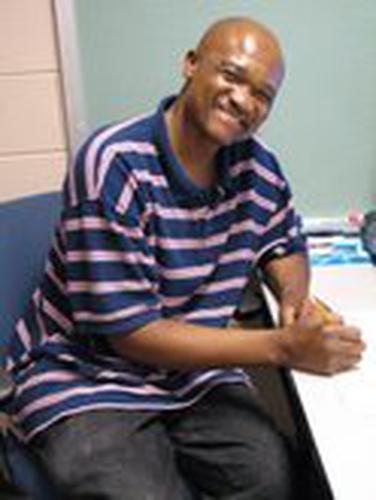
Kabemba, Mbaya
By Kate Harter | June 11, 2007, midnight | In Teacher Feature »
Blair is a school filled with different cultures, backgrounds, beliefs and ideologies. There are students and faculty who have come to Blair from all over the world, and French teacher Mbaya Kabemba fits right in among the diverse population.
We found 886 results.